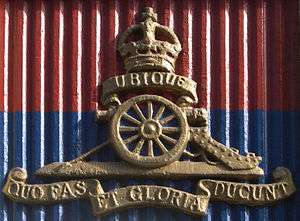Thomas W. Fuller
| Thomas William Fuller | |
|---|---|
| Born |
May 3, 1865 Ottawa, Canada West |
| Died |
November 4, 1951 Ottawa, Ontario |
| Nationality | Canadian |
| Occupation | Architect |
| Practice | Chief Dominion Architect |
Thomas William Fuller (May 3, 1865 – November 4, 1951), the son of Thomas Fuller, was a Canadian architect. Before his selection as Dominion Architect, Fuller designed a number of federal buildings in Dawson City, Yukon, some of which are now designated as National Historic Sites of Canada. These include the Post Office (1899); Court House (1900–01); Territorial Administration Building, 5th Avenue (1901); Public School (1901) which burned 1957; and Commissioner's Residence (1901).
He served as Chief Dominion Architect from 1927 to 1936, designing a number of prominent public buildings in Canada. Thomas W. Fuller designed a number of post offices:
- Outremont, Quebec, Bernard Avenue, (1928–29); Hespeler, Ontario Queen Street East, (1928); Fort Frances, Ontario (1929); Saskatoon, Saskatchewan, 1st Avenue, 1929; Moncton, New Brunswick (1931); Penetanguishene, Ontario (1931); Perth, Ontario (1933); Montreal, Quebec, St. James Street (1932); Montreal, Quebec Notre-Dame-de-Grace Sherbrooke Street East (1934–35); Fort William, Ontario, Syndicate Avenue near Donald Street (1934); Montreal, Quebec, Central Post Office, Peel Street, (1935); Amherst, Nova Scotia (1935).
His son, Thomas G. Fuller, founded Thomas Fuller Construction company in 1958 which built many public buildings in Ottawa as well as the sheltered harbour for the Britannia Yacht Club.[1] In 2002, the company was awarded a contract to renovate the Canadian Library of Parliament.[2]
Works
| Site | Date(s) | Designated | Location | Description | Image |
|---|---|---|---|---|---|
| Mewata Armouries 801 11th Street S.W. |
1915-8 | Calgary, Alberta | The building was designed in a Tudor/Gothic Revival style. A classic example of armoury design, Mewata has features deliberately bringing to mind a medieval fortress or castle, including four square corner towers, four smaller six sided towers, and buttresses with turrets and a crenellated roofline. |  | |
| Bessborough Armoury 2025 West 11th Avenue | 1932-3 | Vancouver Inventory of heritage buildings "B" Category; Recognized - 1997 - Register of the Government of Canada Heritage Buildings; | Vancouver, British Columbia | large Neo-Gothic style structure with a low-pitched gable roof on a flat site faced by mature trees within an area of containing light industry, and adjacent to a residential area |  |
| Victoria Rifles Armoury, 691 Cathcart Street | 1933 | 1984 Register of the Government of Canada Heritage Buildings | Montréal, Quebec |
Housing Le Régiment de Maisonneuve, this Gothic Revival armoury`s two-dimensional façade with a low-pitched gable roof is pressed up against its urban streetscape |
 |
| Côte des Neiges Armoury 4185 Chemin de la Côte des Neiges, | 1934-35 | 1991 Register of the Government of Canada Heritage Buildings | Montréal, Quebec |
On a treed site on the southwest perimeter of Mount Royal Park, this Châteauesque structure houses The Royal Canadian Hussars (Montreal); 2nd Field Regiment, Royal Canadian Artillery |
|
| Regina Armoury, 1600 Elphinstone Avenue, | 1928 | Recognized - 1998 on the Register of the Government of Canada Heritage Buildings | Regina, Saskatchewan |
|
|
| Rouyn Armoury | 1935-6 | Recognized - 1983 Register of the Government of Canada Heritage Buildings | Rouyn, Quebec | centrally located, symmetrical Neo-Gothic style building with a steeply pitched gable roof | |
| Seaforth Armoury 1650 Burrard Street | 1936 (completed) | Classified - 1997 Register of the Government of Canada Heritage Buildings | Vancouver, British Columbia | designed by architects McCarter and Nairne, the massive, low-massed, asymmetrical, concrete Neo-Gothic style structure with a fortified appearance is as a Class A Heritage Building in downtown Vancouver housing The Seaforth Highlanders of Canada |  |
| Confederation Building (Ottawa), Wellington Street at Bank Street | 1928-31 | Ottawa, Ontario |  | ||
| The Ore Building, Booth Street | 1929 | Ottawa, Ontario | |||
| Custom House, Front Street West at Yonge Street | 1930-31 | Toronto, Ontario | |||
| Department of Justice Building, Wellington Street | 1935-7 | Ottawa, Ontario | | ||
| Federal Building, Sinclair Centre | 1935-1937 | Vancouver, BC | Beaux-Arts extension of Post Office Building by David Ewart |  |
External links
References
- ↑ http://www.fuller.ca/history/ Thomas Fuller Construction Co. Limited
- ↑ http://collectionscanada.gc.ca/ourl/res.php?url_ver=Z39.88-2004&url_tim=2012-07-24T14%3A09%3A55Z&url_ctx_fmt=info%3Aofi%2Ffmt%3Akev%3Amtx%3Actx&rft_dat=27328204&rfr_id=info%3Asid%2Fcollectionscanada.gc.ca%3Aamicus&lang=eng Ottawa : Government of Canada, 2002.
| Wikimedia Commons has media related to Thomas W. Fuller. |
| Political offices | ||
|---|---|---|
| Preceded by Richard Cotsman Wright |
Chief Dominon Architect, Canada 1927 – 1936 |
Succeeded by Charles D. Sutherland |